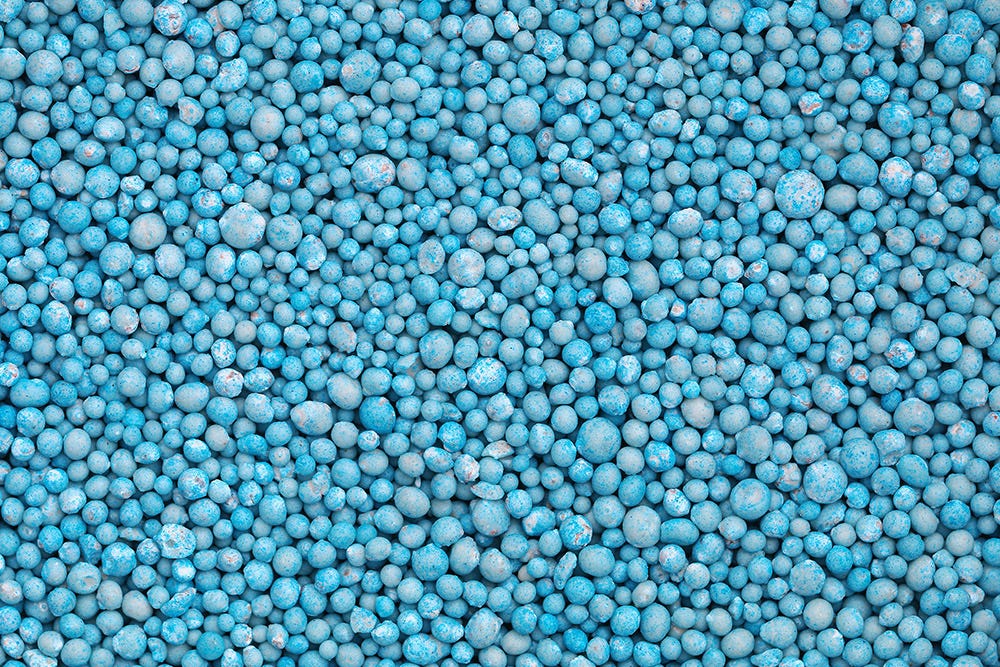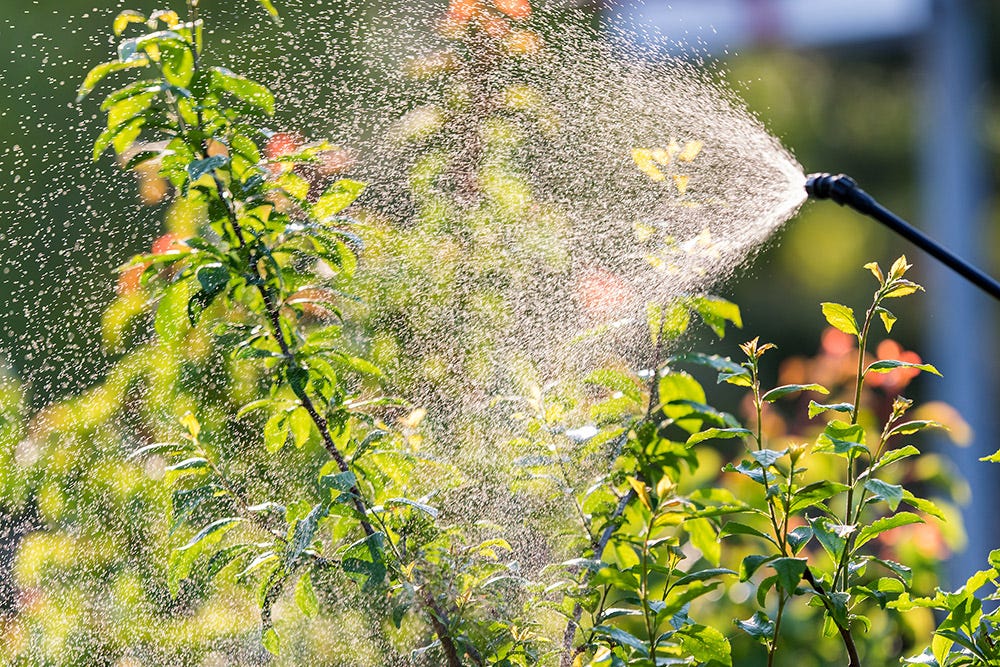
Before spreading fertiliser, inspect your lawn to avoid encouraging more weeds. A daisy grubber is the ideal tool for removing weeds as it extracts the plant with its taproots intact – which helps to prevent regrowth. Once the weeds have been extracted, it’s time to add nourishment.
Which type?
-
A potassium-rich fertiliser is important during the summer as it supports the grass in managing the effects of intense heat.
-
A slow-release fertiliser will help to protect your grass because there is less chance of damage if too much is applied.
How much?
-
Rather than using the whole seasonal dose at once, divide your fertiliser into three equal amounts.
-
Splitting the fertiliser into three applications gives the grass the opportunity to absorb nutrients over a longer period, giving it more consistent nourishment.
Application tips
-
When using granular lawn feed, it's best to use a wheel-based feed spreader that ensures a more even distribution. This means the grass absorbs a balanced concentration of fertiliser to create a uniform effect.
-
Hand spreading is difficult to manage – even for experts – as it tends to result in areas of overly concentrated fertiliser. This can cause grass burning and differences in growth rate and colour changes – all leading to an uneven looking lawn.
When to water
-
After spreading fertiliser, water the grass immediately using a sprinkler or a watering can with a rose head attachment.
-
This helps to drive the granules towards the soil, washing them off from the leaves and carrying the nourishment down to the roots.
The advantages of mulching mowers
If you have a mulching mower, your lawn tends to require less fertiliser. This is because the grass trimmings spread by the mower provide around 30% of the nutrients your lawn needs to thrive.

Protecting your plants from pests is crucial but knowing the safest and most effective approach can be daunting, especially when it comes to using chemicals. We’ve created an easy-to-follow guide on how to use insecticides and pesticides safely, so you can be confident in your approach and application.
